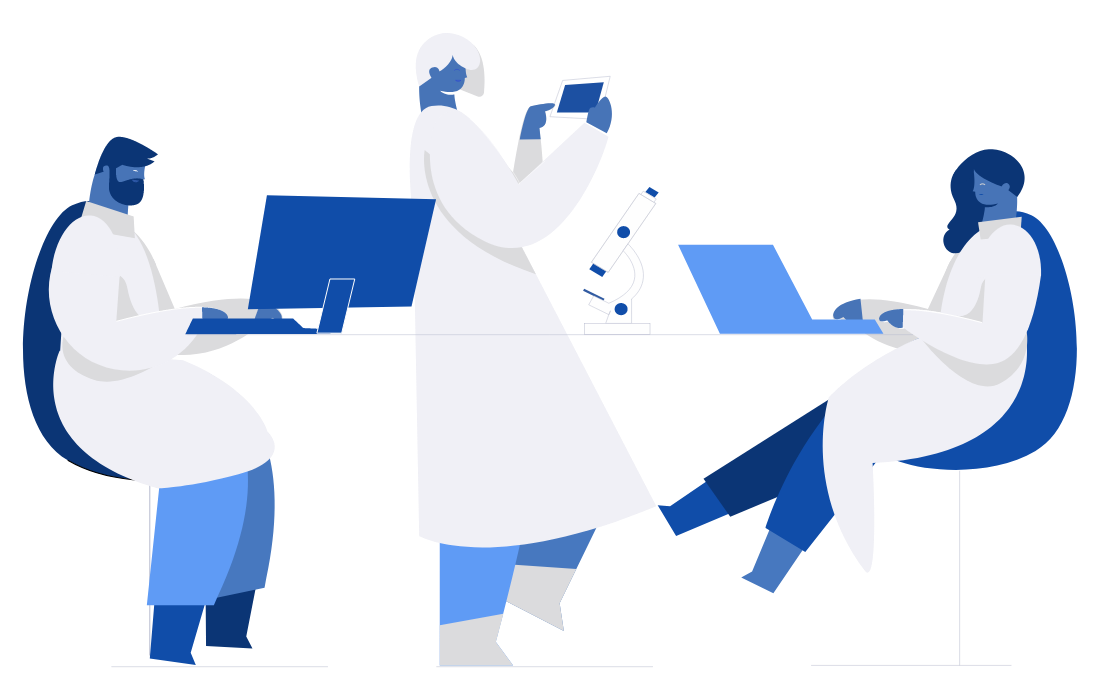Your lab is similar to this scenario:
Your lab performs studies according to GLP. They may include qualitative and quantitative analysis of biological samples, optimization, development or validation of analytical procedures for internal uses or for customers such as pharmaceutical companies or CROs. These analyses may also be executed in compliance with certain ISO standards (e.g. ISO 17025, ISO 9001). Typically your company will have some level of quality assurance management in place and may be formally certified. Such companies may also have other departments that are not regulated and are much more flexible in their use of an ELN. Experiments/studies can be performed for either in-house purposes or for customers.
Size: You are a medium sized lab within the larger organization.
Keywords describing the example: QMS, quality assurance, process, SOP, regulated, ISO, ISO 17025, ISO 9001, GxP, GLP, E-signatures, audit trails, 21CFR part 11, Annex 11, task status.
Suggested SciNote structure:
Team
For you, the team is your lab team, your department.
Project
The name of the project can be the name of the client i.e. client’s organization. This is useful if you want that different client’s data is separated and the access to the data is limited to the working group. For example: Client 1 – Analytical procedures (APs), Client 1 – Protocols
Experiments
An experiment can represent a study that needs to be planned, executed, reviewed and reported on.
Tasks
Tasks inside an Experiment can represent the entire study. For example, one Task may be dedicated to study planning, while another Task can be dedicated to education or training for the study. The next set of Tasks can represent individual analytical protocols/SOPs that should be performed as part of the study. And finally, a Task can be dedicated to study reports.
To sum it up, your SciNote structure could be
Team 1: Your department
Project(s): Client 1 – Protocols; or Client 1 – Analysis
Experiment(s): Study plan, Quantification analysis, Data quality control
Task(s): Requirements, Sample preparation, Preliminary analysis, Reporting
Examples of additional functionalities that are helpful:
Using the electronic signatures, the authorized person can approve, sign (or even reject) a suggested form that is in review. In SciNote, requesting the approval or requesting the signature is easy, and more than one person can sign if there are multiple levels of supervision in the lab.
SciNote enables audit trails to independently record the date and time of each user’s entries and actions. The audit trails cannot be edited or deleted.
Inventories in SciNote are lists (repositories, libraries) of whatever you need e.g. files, samples, equipment, reagents or something completely different. They are completely editable so your columns can contain names, ID codes, barcodes, files, dates and more. You can always add a new item to the inventory and then assign it to the task within the experiment. This means you will always have the full history of what has been done with each inventory item, one click away. If you want an organized list of all forms for example, you can use the inventories for that as well. Each item can have its ID, name, the associated file etc. You can always add a new inventory item to the inventory and then assign it to the task within the experiment. This means you will always have the full history of what has been done with your inventory items, one click away.
If your QA instructions and processes are written as SOPs or protocols to follow, they can be saved within the protocol repository. You can create different versions, and use a protocol as a template to create a new one. All activities related to each protocol will be recorded (date/time of modification, user who made the change etc.). You will also be able to see which projects this particular protocol has been associated with.
If your client requests a similar experiment, or the same one within the different time frame, you can copy the experiment as a template and reuse it, or copy one or all tasks as templates.
Can’t find what you are looking for?
Schedule a Q&A session with us to discuss the best option for your lab.


